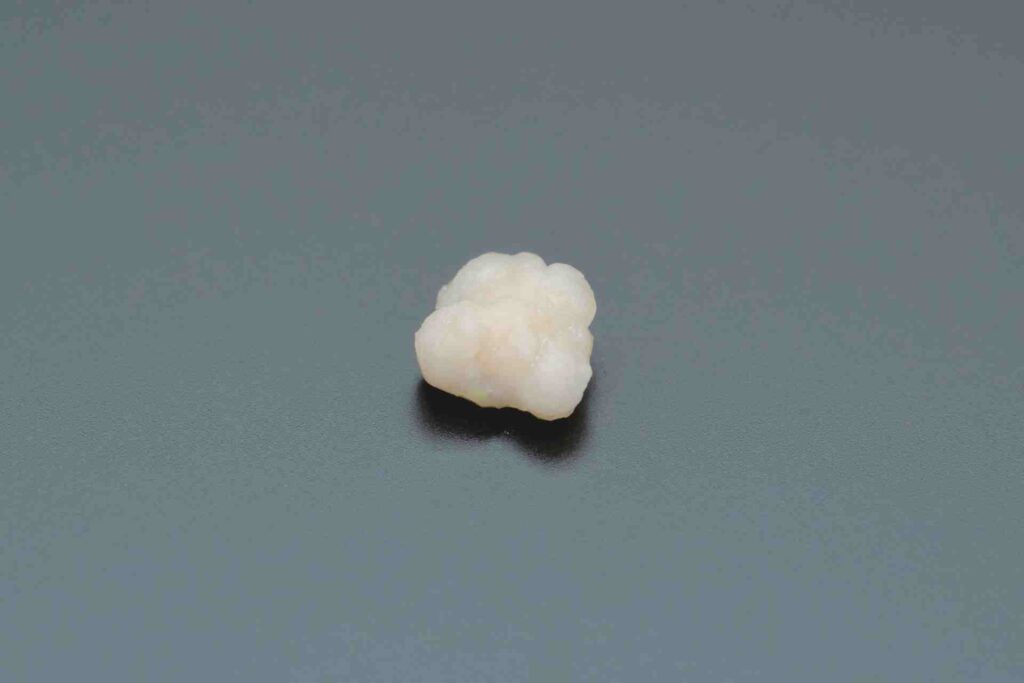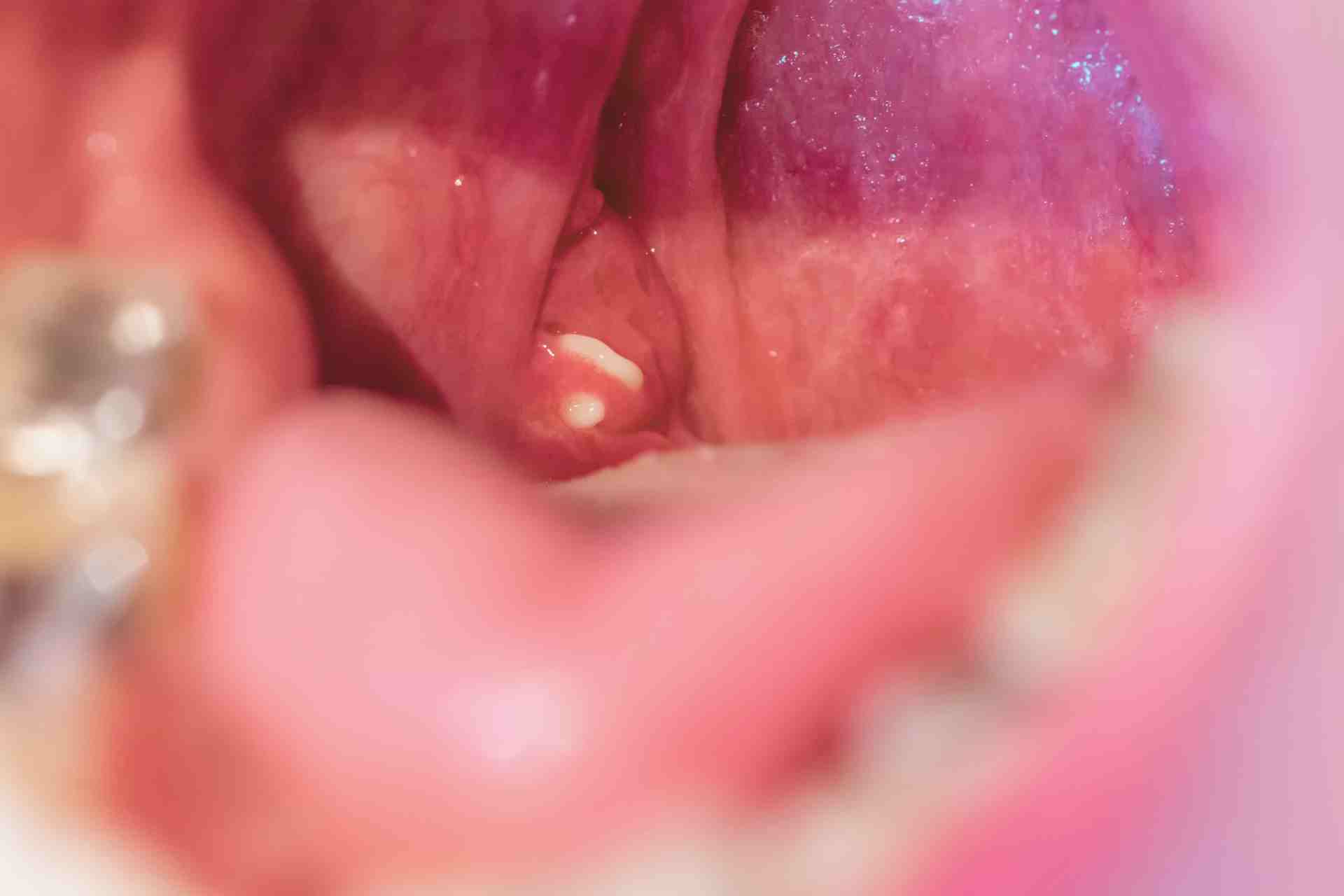Highlights:
- Tonsil stones can cause a foul odor due to trapped bacteria.
- Common signs include bad breath, sore throat, and visible white spots.
- Safe removal methods include gargling with salt water and using water flossers.
- Maintaining good oral hygiene can help prevent their formation.
Ever had that stubborn bad breath that just won’t quit—no matter how much you brush, floss, or rinse? If your mouth feels clean but your breath says otherwise, the real problem might be hiding in your tonsils. Yep, we’re talking about tonsil stones.
These tiny, hard, and often stinky formations love to hide in the little crevices at the back of your throat. And while they’re usually harmless, they can smell awful. Most people describe the odor as sulfur-like or even similar to rotten eggs—definitely not the kind of scent you want lingering.
The good news? Once you know what you’re dealing with, they’re totally manageable. In this guide, we’ll break down what causes that notorious tonsil stones smell, how to safely get rid of it, and how to keep those pesky stones from coming back.
What Are Tonsil Stones?

Tonsil stones—also called tonsilloliths—are those small, chalky-looking clumps that can form deep in the folds (called crypts) of your tonsils. If you’ve ever noticed tiny white or yellow lumps at the back of your throat, that’s probably them.
They’re made up of all kinds of debris:
- food particles
- dead cells
- mucus
- bacteria
Over time, this gunk gets trapped, hardens, and forms into little stones. Gross? A little. Harmless? Usually, yes.
While they don’t always cause symptoms, many people notice bad breath, a strange taste in the mouth, or the feeling of something stuck in their throat. They can be small and sneaky—or large enough to see and feel. Either way, they’re more common than most people realize.
Why Do Tonsil Stones Smell So Bad?
If you’ve ever caught a whiff of a tonsil stone (or worse—accidentally smelled one after coughing it up), you know the smell is next-level. So what makes these tiny stones pack such a powerful punch?
It all comes down to what they’re made of: bacteria, dead cells, mucus, and leftover food particles. When this stuff gets trapped in your tonsil crypts and starts to break down, it releases volatile sulfur compounds—the same kind that gives rotten eggs or bad breath their signature stink.
Even the smallest tonsil stones can smell terrible because they’re basically little pockets of decomposing material. That’s why you might notice a lingering odor, even if your oral hygiene is otherwise spot-on. It’s not your brushing routine—it’s those sneaky tonsil stones doing the dirty work.
Common Symptoms of Tonsil Stones

Tonsil stones can be tricky—they don’t always make themselves obvious right away. Some people only find out they have them after coughing one up or spotting a white bump at the back of their throat. But if you know what to look for, the signs are actually pretty easy to catch.
Here are some of the most common symptoms:
Persistent bad breath (halitosis)
This is often the first (and most frustrating) sign. Even after brushing and rinsing, the odor lingers.
Sore throat or discomfort when swallowing
Tonsil stones can irritate the surrounding tissue or make swallowing feel awkward—especially if they’re larger.
White or yellowish spots on the tonsils
If you shine a light into your mouth and see small, chalky clumps, those might be stones.
Ear pain without an ear infection
The nerves in your throat and ears are connected, so pressure from a tonsil stone can cause referred pain in your ears.
A feeling of something stuck in the throat
This sensation is super common and can be caused by even a small stone hiding in your tonsil crevice.
If you’re experiencing one or more of these symptoms regularly, it might be time to check in with your dentist or ENT. Tonsil stones are common—but that doesn’t mean you have to live with them.
How to Remove Tonsil Stones Safely
If you’ve spotted a tonsil stone or are dealing with the dreaded tonsil stone smell, you’re probably wondering how to get rid of it—safely.
The good news? Most tonsil stones can be managed right at home without any major procedures. The key is to be gentle and consistent.
Do:
Gargle with warm salt water: This is a simple go-to. Salt water helps loosen debris and reduce bacteria in the area, which can dislodge smaller stones and soothe irritation.
Use a water flosser: A low-pressure water flosser (on the gentlest setting) can help flush out stones tucked into tonsil crevices. Just aim carefully and don’t overdo it.
Practice good oral hygiene: Brushing twice a day, flossing, and using mouthwash can prevent new stones from forming by minimizing bacteria and trapped food. A clean mouth = less fuel for future stones.
Don’t:
Use sharp objects: Please skip the bobby pins, tweezers, or any DIY tools you’ve seen on TikTok. Your tonsils are delicate, and poking around can lead to bleeding or infection.
Force removal: If a stone is stuck deep or causing pain, don’t try to dig it out. It’s better to let your dentist or ENT handle it professionally to avoid injury.
Remember—some stones will fall out on their own, especially with regular rinsing. Stay patient and focus on keeping your mouth clean. Prevention goes a long way.
Preventing Tonsil Stones

Maintain Good Oral Hygiene
This is your first line of defense. Brush at least twice a day, floss daily, and use an alcohol-free mouthwash to keep bacteria in check. Don’t forget to brush your tongue, too—it’s a major hiding spot for odor-causing bacteria.
Stay Hydrated
Drinking plenty of water throughout the day helps keep your mouth moist and clears away food particles and bacteria that could otherwise end up stuck in your tonsils.
Avoid Smoking
Tobacco products dry out your mouth and introduce more bacteria, making it easier for stones to form. Quitting (or cutting back) can make a noticeable difference—not just in tonsil stone prevention but in overall oral health.
Monitor Allergies and Post-Nasal Drip
Excess mucus from allergies or sinus issues can collect in the back of your throat, feeding the bacteria that cause tonsil stones. Managing your allergies—whether through medication, rinses, or avoiding triggers—can help keep mucus buildup under control.
When to See a Doctor
While tonsil stones are usually harmless and manageable at home, there are times when it’s best to get a professional involved. If you’re constantly dealing with them or experiencing more serious symptoms, don’t just tough it out—your doctor or ENT can help.
Here’s when to make that appointment:
Tonsil stones keep coming back
If you’re constantly spitting out stones or dealing with the smell despite good hygiene, something more might be going on. Chronic cases may need a long-term solution.
You’re feeling significant discomfort
Pain while swallowing, persistent sore throats, or the feeling of pressure in your throat that doesn’t go away can signal it’s time to get checked.
You notice signs of infection
Swollen lymph nodes, fever, or redness around the tonsils might indicate an infection. In that case, a doctor should evaluate and treat it quickly.
You’re considering removal
If tonsil stones are really interfering with your quality of life, your ENT may suggest a tonsillectomy (surgical removal of the tonsils) as a permanent fix—especially if stones are large, frequent, or painful.
FAQs
Q: What does a tonsil stone smell like?
A: Tonsil stones often have a very strong, unpleasant odor—commonly compared to sulfur or rotten eggs. That smell comes from the breakdown of bacteria and trapped debris inside the stone.
Q: How to remove tonsil smell?
A: Consistent oral hygiene is key. Gargle with warm salt water, brush your tongue, and floss daily. If you can see a stone, gently removing it can help eliminate the odor quickly.
Q: Is it okay to pick out tonsil stones?
A: It’s not recommended to poke around with sharp tools—tonsil tissue is delicate and easy to injure. If you feel comfortable, try using a gentle rinse or a water flosser. Otherwise, see a dental or medical pro for safe removal.
Q: How to check yourself for tonsil stones?
A: Use a flashlight and a mirror to look at the back of your throat. Tonsil stones often appear as white or yellowish lumps tucked into the tonsils. If you’re unsure what you’re seeing, your dentist or ENT can help confirm it.
Q: Can I kiss my boyfriend if I have tonsil stones?
A: The stones themselves aren’t contagious, but the bacteria that cause them can be. Keep up with your oral care routine, and if you’re dealing with active tonsil stones, maybe hold off on close contact until things clear up.
Q: Why did I just spit out a tonsil stone?
A: It’s actually pretty common! Tonsil stones can dislodge naturally when you cough, sneeze, or even during eating. It’s usually nothing to worry about, especially if you don’t have any other symptoms.
Key Takeaways
- Tonsil stones are common and often harmless but can cause bad breath.
- Maintaining good oral hygiene is crucial for prevention.
- Safe removal methods include gargling and using water flossers.
- Consult a healthcare professional if stones are recurrent or cause significant discomfort.





















